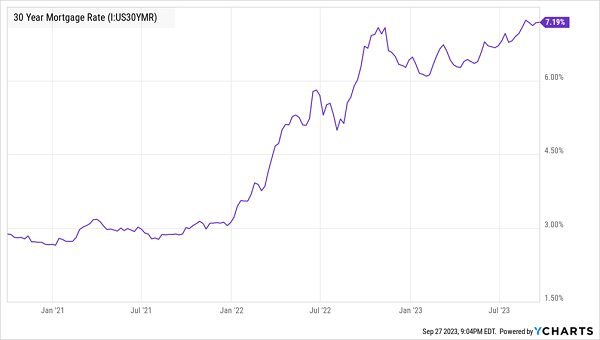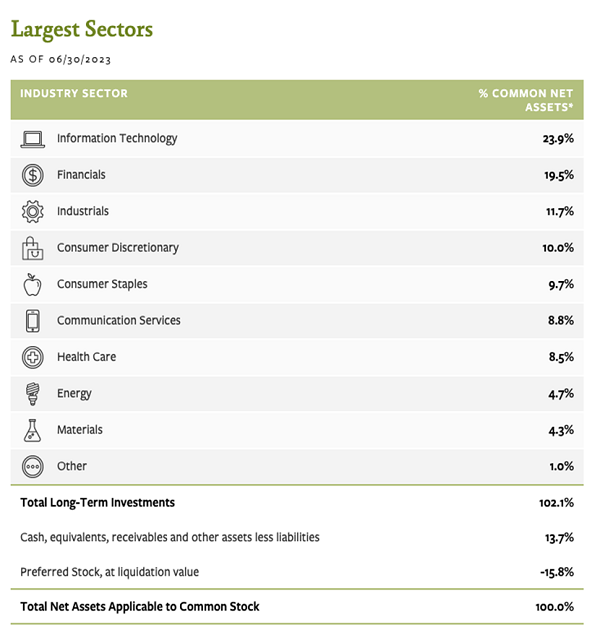What happened to the stock-market rally? Simple: it’s been undermined by two overdone fears: of a housing-market correction and worries around a government shutdown.
But well reported-on events like these rarely have the big impact most people think they do. In fact, this pullback in stocks is a buying opportunity, particularly in high-yield closed-end funds (CEFs).
Don’t Buy the Gloom Narrative Around Stocks
Before we get to potential strategies and buys, I do have to say one thing: don’t let anyone tell you stocks are doomed. This year has too much positive sentiment, and the S&P 500 still hasn’t reached all-time-highs, so this isn’t a pause in a bull market. It’s a pause in a recovery.
Not that the recovery has been smooth, mind you. We did have a banking crisis, but the market recovered in three months because, while the issues in the banking system were serious, they weren’t contagious. The rest of the economy has seen profits and revenues rise as consumers return to form in a fully post-COVID world where, at least so far, high interest rates aren’t hitting them too hard.
That is, except for in housing.
Mortgage Rates Balloon

With mortgage rates more than doubling in the span of a couple years, housing affordability has crashed. And the Fed has said it might raise rates again. Even if they don’t, rates are likely to stay high for a while.
However, this isn’t another 2008, as the data is still good—yes, house sales aren’t booming, but they aren’t crashing, either. Which suggests the soft landing the Federal Reserve has been aiming for is still on the table.
That brings us to the current shenanigans in DC. I’ve gotten some questions from readers about the effects a government shutdown could have on the economy and stock market, so I thought I’d dig into the historical record. This latest fuss around government gridlock gives us a good reference to bear in mind whenever something similar crops up in the future.
First, let’s consider the history: the US government flirted with a shutdown and a potential default on US Treasuries as recently as April 2023, and stocks are way up since then.

Source: Financial Times
Truth is, shutdowns and narrowly averted shutdowns are becoming a fact of life in America. They include a 35-day closure of the government in December 2018 and a 16-day shutdown in 2013. Both 2013 and the year following the late-2018 shutdown were strong for stocks, with the S&P 500 up 32% in 2013 and 31% in 2019.
This by itself tells you that the current pause in the market’s momentum is unlikely to last; a shutdown—indeed just about any drama out of DC—just isn’t a big enough deal. Of the 10 shutdowns we’ve had since 1980, none have significantly impacted the stock market over the long term.
How to Buy the September Swoon
Stocks are oversold, so we want to compound our profits with an oversold CEF that is itself overly discounted and full of strong stocks.
The General American Investors (GAM) CEF nicely fits the bill here, with its 17.9% discount to net asset value (NAV, or the value of its underlying portfolio) and focus on deep-value, high-quality large cap companies like Microsoft (MSFT), Apple (AAPL) and waste manager Republic Services (RSG).
That discount, in essence, is like buying these stocks at late 2022 levels! In fact, its portfolio nicely reflects the S&P 500 today, making it a nice fit for the current pullback:

Source: General American Investors
Not only is this a strong pick because stocks’ temporary selloff is good for the long-term health of the market, but it’s also a strong pick because of its long-term dividend payouts.
GAM’s payout goes under the radar because most of it is distributed at the end of the year in the form of a one-time special dividend. But on average, GAM has yielded 7.4% annually each year over the last decade, thanks to those big special payouts. This is why the fund’s 17.9% discount is absurd, and why it should start to narrow soon.
That’s because GAM’s big special payout is usually declared in November and paid out in late December. In bull years, it pushes the fund’s trailing-12-month yield even higher than 7.4%. In 2021, it hit 8.8% for anyone who bought in at the start of the year.
And the 14% gain in GAM’s NAV this year suggests a similarly large yield is on the way as we reach the end of 2023.
Strong NAV Performance Suggests a Large Year-End Special Div

Until others jump into this fund and make that discount shrink, you can buy in now and get lined up for that big yield. While short-term jitters might bring stocks lower, that really is just a buying opportunity, as the data hasn’t changed in months (even if the news has). And the stock market always, eventually, relies on facts and data.
5 More Urgent Pullback Buys (Throwing Off Massive 10.5% Average Yields)
This overdone pullback has slashed the prices—and driven up the yields!—on 5 of my top CEF picks to buy now. That’s had a happy “knock-on” effect for us, because their elevated yields make our buys even safer.
Think about it for a moment: because their high yields “repay” 10.5% of our upfront investment every year, we’ll have recouped it all in less than a decade. Any price gains on top of that are pure gravy!
I’m ready to share the full story on these funds and the other “hidden” opportunities waiting for you in CEFs. Click here and I’ll share my strategy and give you the opportunity to download a free Special Report revealing their names and tickers.
